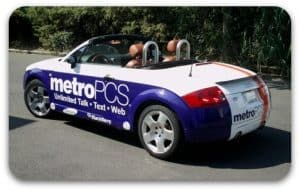Introduction: A New Frontier for Behavioral Marketing
Advertising on shopping carts isn’t new—but using them as behavioral prompts at the point-of-purchase? That’s a powerful innovation most marketers are overlooking.
While many brands view ads on shopping carts as simple, static impressions, In-Cart NudgeTech transforms that real estate into a real-time decision driver. By blending tactile media, behavioral design, and contextual triggers, marketers can now influence shopper actions—right in the aisles.
This blog explores how advertising on shopping carts can evolve from visibility tools into active cognitive nudges. We’ll break down how to use subtle, science-backed tactics to drive conversions and brand recall, all while meeting the shopper where it matters most—next to the cereal aisle.
Advertising on Shopping Carts: The Untapped Cognitive Real Estate
The Difference Between Seeing and Doing
Most advertisements on shopping carts are treated like moving billboards. But attention ≠ action.
Modern shoppers are overwhelmed with visual clutter. From shelf wobblers to ceiling banners, much of retail signage is ignored. But the shopping cart handle and inside-facing cart panels? These are in constant contact with the shopper.
Behavioral science tells us that the more a stimulus is in our field of motion, the more likely it is to influence decision-making. That’s why ads on shopping carts offer such strategic leverage—if used correctly.
Nudging Purchase Behavior: How Cart Ads Trigger Action
What is a behavioral nudge? It’s a subtle design choice that influences decisions without restricting options. In a retail setting, this could mean:
Suggesting healthy choices
Encouraging bundling
Reinforcing urgency or exclusivity
Now imagine integrating this thinking directly into ad on shopping carts.
Examples of Nudge-Based Cart Advertising
Health Nudges:
A grocery chain uses cart handle panels with “Smart Cart Tips” suggesting: “Add a leafy green in your first 3 aisles. Shoppers who do this buy 25% fewer snacks.”
Time Anchors:
A QR code on the cart links to a “10-Minute Meal Plan” recipe funnel—driving engagement and product discovery mid-trip.
Urgency Triggers:
In-cart signage: “Grab your 2-for-1 yogurt—only this aisle today.” This leverages location and scarcity in real time.
These aren’t just ads on shopping carts—they are behaviorally optimized nudges that reshape purchase intent without interrupting flow.
QR Codes and In-Cart Interactivity
From Passive Ad to Microfunnel Activation
Thanks to the rise of QR code literacy post-pandemic, advertising on shopping carts is now actionable. You’re no longer limited to static branding.
Each cart can:
Launch microsites for personalized offers
Funnel users into SMS flows or loyalty apps
Offer digital coupons or product trials
Shoppers scan while waiting at the deli or strolling the dairy aisle—turning a previously passive advertisement on shopping carts into a real-time attribution engine.
A Note on UX: Placement Matters
QR codes and nudges must be:
Visible at eye-level inside the cart
Short, relevant, and value-driven (“Scan to win lunch!”)
Localized when possible—ZIP-based personalization boosts scan rates
Incorporating behavioral UX is crucial to making the most of ads on shopping carts in today’s mobile-first journey.
Attribution and Behavioral Metrics
Moving Beyond CPM to Cost-per-Action
Traditional shopping cart advertising pricing often references CPM. But with nudge-based design and QR engagement, you can track:
Cost-per-scan
Cart-to-click-through
In-store to online funnel completion






